

St Mary’s Church, Madras (Chennai). Founded 1680. Left: Church tower. Right: Side with crenellations. [Click on images to enlarge them.]
St Mary’s Church in Fort St George is not only the earliest Anglican church in India but claims to be the first east of Suez, built in 1680. It is still one of the finest examples in India, designed to catch even the slightest hint of a breeze off the sea; a haven of relative coolness in the sweltering heat of a south Indian summer. Inside the church is a plethora of memorials to officers and civilians of the East India Company who died far from home, sometimes in battle but more often from the combination of tropical heat and disease.
Fort St George, one of the first footholds of the East India Company in India, still survives on the coast of South East India, now dwarfed by the huge city of Chennai (formerly Madras). One of the best preserved buildings inside the walls is St Mary’s church, completed in 1680; the oldest Anglican church east of Suez and one of the earliest buildings in British India. It is steeped in the early colonial history of India. Robert Clive, Warren Hastings, Lord Cornwallis and the Duke of Wellington (when Colonel Arthur Wellesley) worshipped here. For Americans there is particular interest because, apart from the Cornwallis connection, Elihu Yale was closely associated with the church. Born in Massachusetts, he travelled to Madras in 1672 as a junior Company official and rose to be Governor from 1687 to 1692.
According to Philip Davies “The architect was probably William Dixon, the Master Gunner of Fort St George at the time but it has also been attributed to his successor Edward Fowle. The plan is simple: three aisles with semi circular roofs built entirely of solid masonry two feet in thickness to withstand bombing, siege and cyclones. The outside walls are four feet thick... No wood was used in the structure to prevent the depredations of white ants” (p.27). Perhaps one of its most notable features is that it has been designed to catch any slight breeze from the Coromandel Coast. Below semi-circles of stained glass, all of the windows are designed to be opened right down to floor level and the thick walls also provide good insulation.


Left: The castellated west end of the church. 5. Right: The curved staircase. [Click on images to enlarge them.]
Interior
At various periods during the wars with the French it served as a water store, a lookout post, a warehouse for cotton bales and a granary. The churchyard contains early British tombstones which were moved there in 1760. The interior of the church boasts some remarkably fine examples of funerary sculpture including works by John Flaxman, John Bacon, Edward Richardson and Sir Francis Chantrey. Among the luminaries either buried or remembered are several Governors of Madras, including Sir Thomas Munro, one of the ablest of all British administrators in India, Admiral Sir Samuel Hood and Josiah Webbe, who was partly responsible for the successful campaign against Tipu Sultan. Close to the Lectern is the unmarked grave of Lord Pigot, a controversial Governor of Madras.

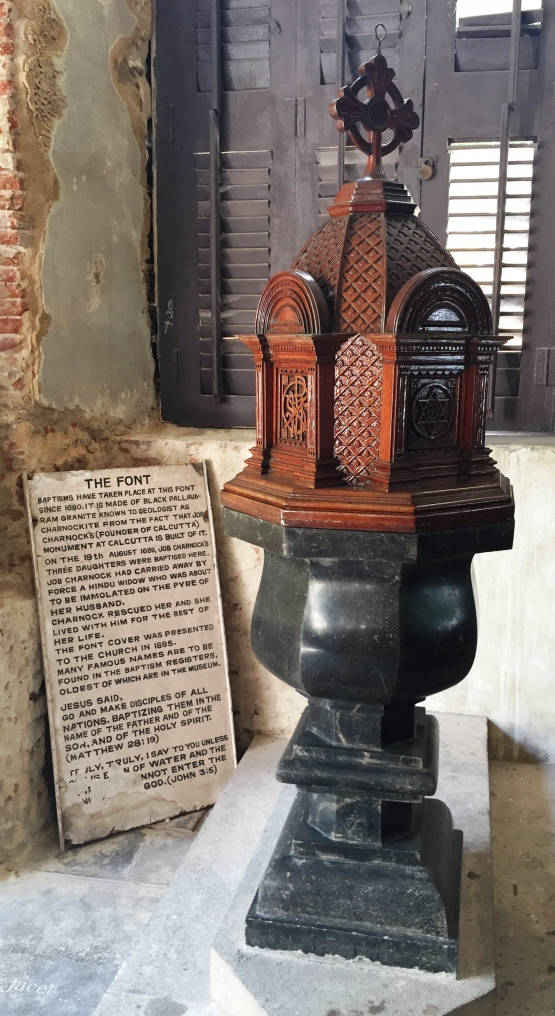
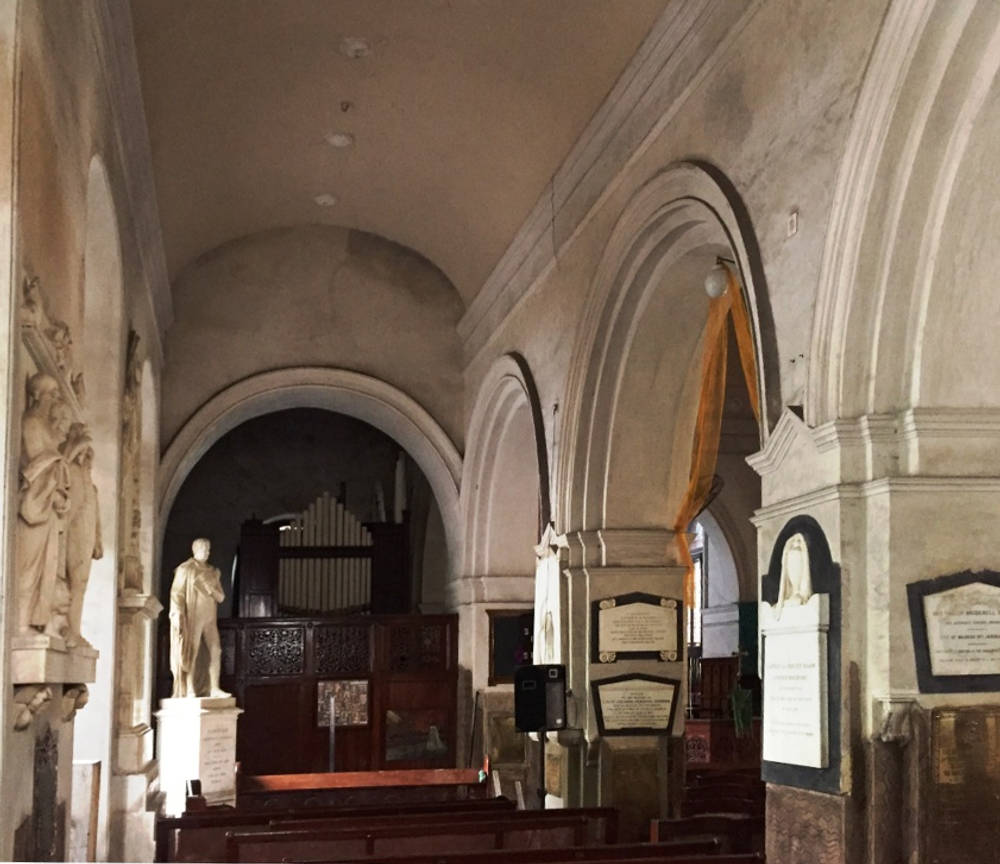
Left: The interior looking towards the altar. Middle: The font. Right: The interior looking West.. [Click on images to enlarge them.]
The font of black Pallavaram granite has been in use since 1680. Its wooden cover was carved in 1885. The original registers include the marriage on 18th February 1753 of Robert Clive to Margaret Maskelyne. Above the altar hangs The Last Supper, a copy of Raphael’s painting looted from the French fort at Pondicherry in 1761. The altar plate was donated by Yale in 1687. The intricately carved balustrade of the Gallery is made of Burmese teak and dates from 1680.
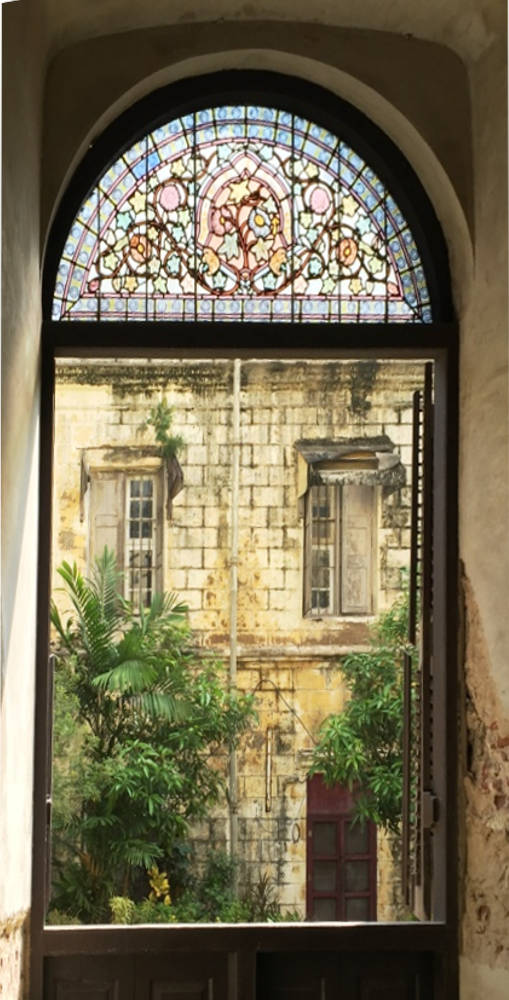
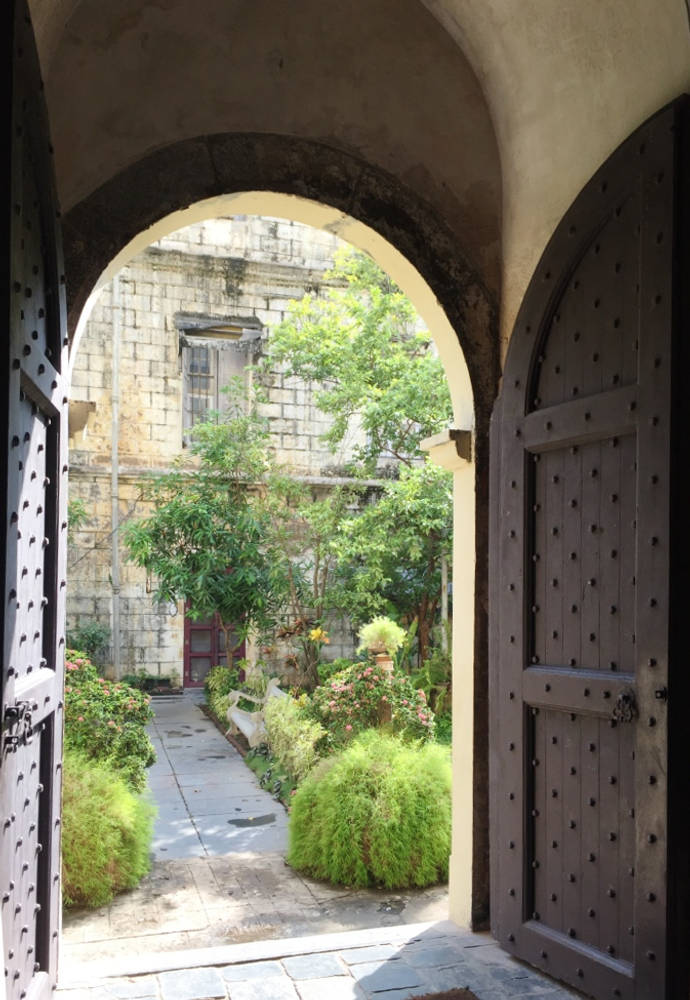
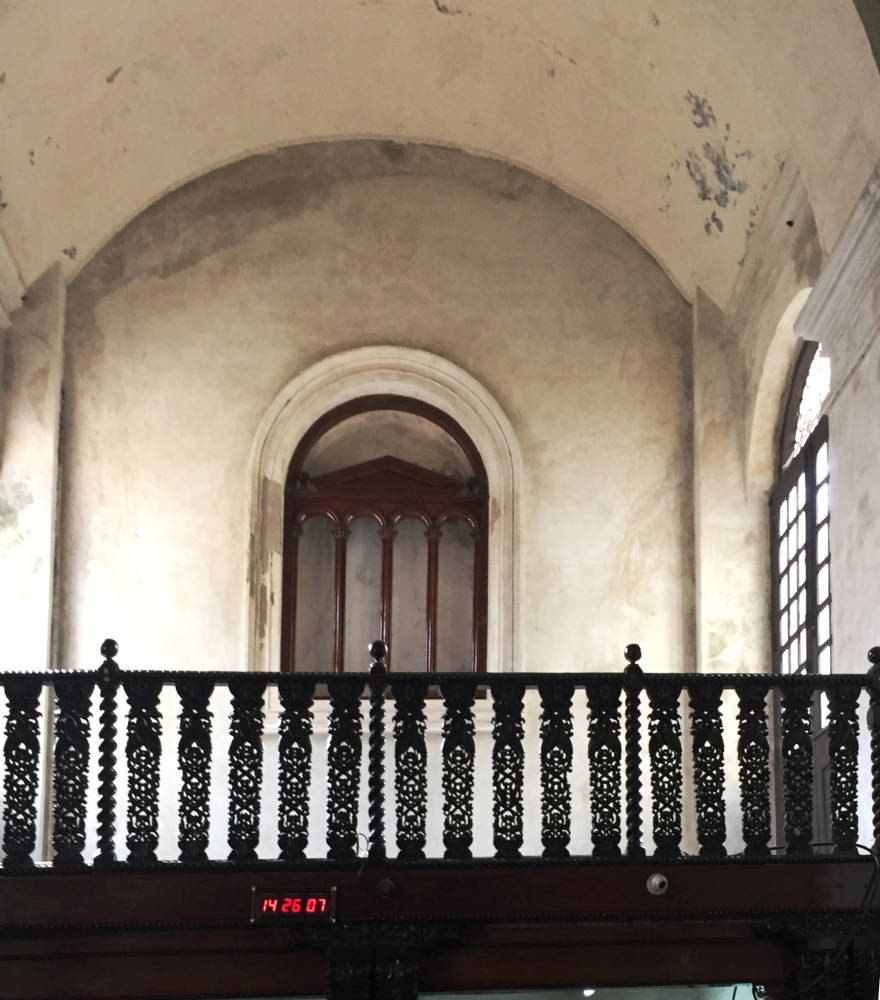
Left: Window with semi-circular stained glass.. Middle: The south door. Right: The gallery with teak ballustrade. [Click on images to enlarge them.]
On the 15th August 1947 the 1st Battalion of the Essex Regiment marched out of the Fort and was replaced by the 3rd Sikh Light Infantry. Since then the Church has been administered by the Church of South India and it is beautifully maintained.
Related material, including monuments
- Grave of Anthony Williams (1691)
- Grave of Admiral Sir Samuel hood
- Plaque outside church
- Memorial for Brigadier Malcolm McNeill
Photographs and text by Tim Willasey-Wilsey. [You may use these images without prior permission for any scholarly or educational purpose as long as you (1) credit the photographer and (2) link your document to this URL in a web document or cite the Victorian Web in a print one.]
Further reading
Davies, Philip. Splendours of the Raj. London: John Murray, 1985. pp 24-29.
Love, Harry Davison. Vestiges of Old Madras. London: John Murray, 1913. I, 424-27.
Morrs, Jan and Simon Winchester. Stones of Empire. Oxford University Press, 1983. Pp. 159-61.
Muthiah, S. Madras rediscovered. Chennai: EastWest, 2014. Pp 31-38.
Young, Stephen. A walk around St Mary’s. Chennai: St Mary’s, 1985.
Last modified 13 August 2017